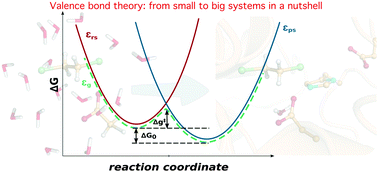How valence bond theory can help you understand your (bio)chemical reaction†
Abstract
Almost a century has passed since valence bond (VB) theory was originally introduced to explain covalent bonding in the H2 molecule within a quantum mechanical framework. The past century has seen constant improvements in this theory, with no less than two distinct Nobel prizes based on work that is essentially developments in VB theory. Additionally, ongoing advances in both methodology and computational power have greatly expanded the scope of problems that VB theory can address. In this Tutorial Review, we aim to give the reader a solid understanding of the foundations of modern VB theory, using a didactic example of a model SN2 reaction to illustrate its immediate applications. This will be complemented by examples of challenging problems that at present can only be efficiently addressed by VB-based approaches. Finally, the ongoing importance of VB theory is demonstrated. It is concluded that VB will continue to be a major driving force for chemistry in the century to come.


 Please wait while we load your content...
Please wait while we load your content...